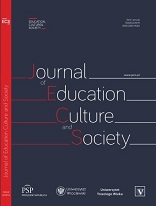LITERARY REALISM IN THE SHAPING OF SLOVAK CULTURE
LITERARY REALISM IN THE SHAPING OF SLOVAK CULTURE
Author(s): Milan KendraSubject(s): Social Philosophy, Sociology of Culture
Published by: Fundacja Pro Scientia Publica
Keywords: Literary realism;Representation;Referentiality;Realist fictional world;Social systems;Autopoietic system;National revival;Ideal realism;
Summary/Abstract: Aim. The aim of the study is to clarify the internal complexity of the Slovak literary realist discourse and its diverse relations to the heterogeneous artistic, cultural and ideological discourses of the last third of the 19th century. Attention is focused on the appropriation and adaptation of stimuli from other social systems, as well as on the specific literary operations that modify literary realism as an artistic discourse constructing an intelligible world in a cultural sense. Methods. As a theoretical concept, realism is defined as a type of representation or representation technique associated with a set of textual conventions, complex referential and self-referential figures. As a literary-historical discourse and event situated in a particular moment of history, realism is governed by period-specific principles (operating in the mechanism of culture) of selection, evaluating and connecting the phenomena of reality. Only with this dichotomy the multiplicity of paradoxes, syncretism and heterogeneous character of Slovak literary realism can be captured. The theory of social systems (N. Luhmann) allows for a more complex view of realist literature as an autopoietic system in the context of modern society as a system of communications differentiated into a network of separate social subsystems interrelated by the medium of language. Finally, the theory of fictional worlds proposes selective and formative operations that explicate the construction of realist fictional world and the stratification of its functions (B. Fořt). Results. Among the configurational relations of Slovak literary realism, the concept of ideal realism is highlighted as a model of literary aesthetics that flexibly interacted with the discourse of national revival to provide an adequate expression of contemporary Slovak cultural and national interests. Two literary-aesthetic modifications of ideal realism (creative and voluntarist, originated by Svetozár Hurban Vajanský, and deterministic, represented in the prose works of Martin Kukučín) are analysed in detail in order to show the inner complexity of the literary-realist discourse and to manifest its semantic multidimensionality in the 1880s.
Journal: The Journal of Education, Culture, and Society
- Issue Year: 12/2021
- Issue No: 2
- Page Range: 455-468
- Page Count: 14
- Language: English

